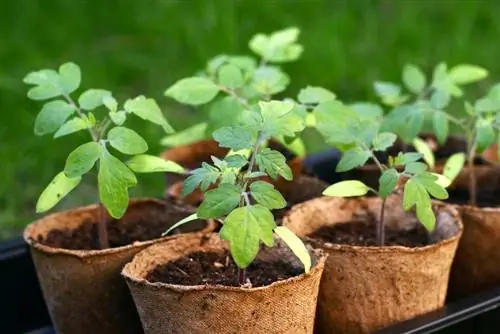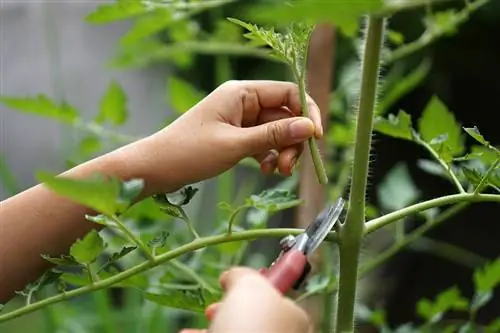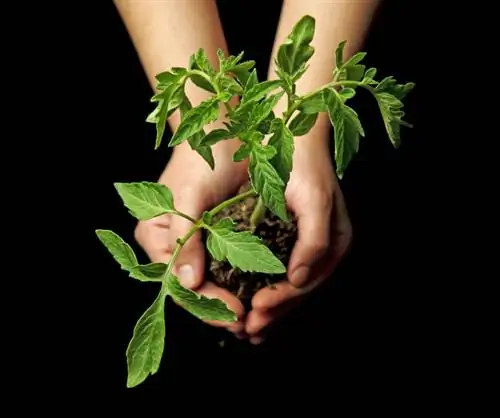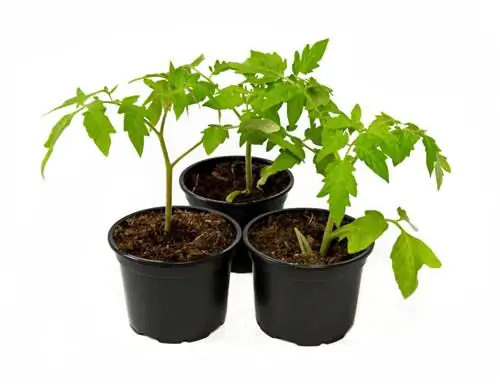- Author admin [email protected].
- Public 2023-12-16 16:46.
- Last modified 2025-01-23 11:22.
Tomatoes are nightshades that are adapted to warm conditions. In order for a seedling to grow into a magnificent perennial, a lot of attention is required. Hobby gardeners should pay attention to a few aspects, especially before planting, to promote plant he alth.
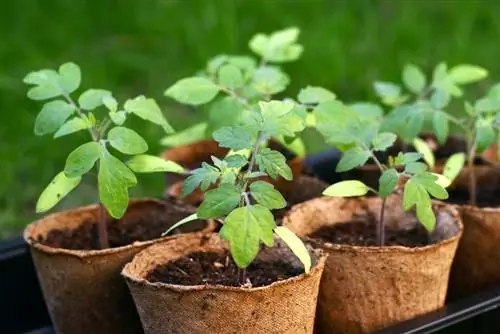
When and how should tomatoes be placed outdoors?
Tomatoes should be put outside between the end of April and the end of May after the Ice Saints. Gradually accustom the plants to the external conditions over a week: place them outside for longer periods of time every day, starting with a few hours, and initially choose a shady, protected location.
Hardening conditions
If you grow tomatoes on the windowsill, the seedlings will grow under protected and controlled conditions. They are not yet adapted to the outdoor climate, so they suffer a growth shock after a sudden change of location to the bed. Gentle habituation increases the stability of the plants, makes them more resistant to cold and has a positive effect on growth.
Time
The vegetable plants can go into the garden between the end of April and the end of May. An optimal time for orientation is the Ice Saints, after which the risk of night frosts is significantly lower. Use this period as a guide and monitor the weather forecast. Ideally, the outside temperature should not fall below ten degrees at night, while at least eight degrees is optimal during the day.
Location
A sheltered spot on a balcony or terrace prepares the young plants for outdoor conditions. An area that is as shady as possible but still bright will protect the leaves from burns. The tomatoes should not be exposed to rain or drafts.
Put tomatoes outside
The getting used to phase lasts over a week and requires hardly any effort. Immediately after hardening, you can plant the plants at their destination. Polytunnels are a good alternative to greenhouses as they protect tomato crops while still providing sufficient lighting and optimal ventilation. You can easily stretch cords onto the poles to tie up the plants.
How to proceed:
- Put tomato plants outside for a few hours in the morning
- Extend the habituation period every day
- At the end of the week the plants move to a brighter place
Build rain shelter
If you can't find a suitable outdoor space, you can stretch foil (€299.00 on Amazon) between a frame made of four bamboo sticks and place it diagonally over the potted plants. Clamp the foil cover with clothespins so you can roll it up and lower it as needed.
Planting
Dig planting holes in a row that are about 60 to 80 centimeters apart. The holes correspond to twice the volume of the root ball. Remove the vegetable plants from their pot and remove the cotyledons. Since these grow very close to the earth's surface, there is an increased risk of rot.
Place the tomato a little deeper in the soil so that additional roots develop at the base of the stem. Fill the gaps with a mixture of compost and excavated soil and press the substrate well.
Tip
Water the young plants daily for the next three days. This allows the substrate to settle and the roots have optimal contact with the soil.

